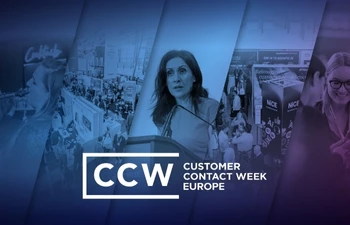Lessons from Formula One to Drive Digital Excellence in Contact Centres
David Coulthard, Former Formula One Driver, Broadcaster, Commentator and Entrepreneur, provides insight on how to use data analytics to improve leadership, digital resilience, and world-class performance in contact centres
Add bookmark
To successfully meet changing customer demand during the COVID-19 pandemic, companies across sectors and regions had to bring about years of technological and digital change in just a few months.
According to a global survey by McKinsey, C-level executives and senior managers representing a range of industries, company sizes, and functional specialities accelerated the digitalisation of their customer interactions by three to four years in order to meet market demand during the crisis.
With advanced data analytics playing a crucial role in how quickly organizations can adapt to change, contact centres are increasingly looking to make data analytics a strategic priority for delivering enterprise value and improving their digitalisation efforts.
At the core of how enterprise value is delivered in Formula One, for example, data analytics is key – it influences the design of the cars, how they are driven, and how the teams set their strategies for winning the race.
With few industries using data analytics as extensively as Formula One, David Coulthard, Former Formula One Driver, Broadcaster, Commentator and Entrepreneur, provided insight for how contact centres can harness similar data practices in their operations to help them deliver digital excellence.
Using Data to Assess Risk
Contact Centres have little choice about facing burdensome challenges, whether they come from competitors, economic conditions, or customer demands. However, it is how contact centres chose to take risks to meet these challenges as problems or opportunities that will make them successful.
Coulthard highlighted: “By using data analytics in everyday operations will mean businesses will be able to set parameters for how their digital systems will function. You will be able to see where there are higher risks for potential faults and use these faults as an opportunity to learn, grow, improve, and adjust your digital systems to leave you better off than before the problem existed.
“In addition, if you have the systems to make all the information available to you then the only bad decision is no decision. You must make a decision and move forward, otherwise, you are leaving yourself open to the risk of competitors overtaking you.”
Pivoting Mindsets from Digital-First to Data-First
Coulthard noted: “Formula One is set apart from many other business functions because they are successful in harnessing the data to achieve better outcomes.”
By asserting a data-first attitude will ensure contact centres are driving their digital transformation strategies using customer insights. After all, customers do not attribute strong relationships to the actual technologies themselves, but rather, use the technologies to strengthen their relationships with businesses or people.
“If you look for opportunities in the data you will always be improving your performance,” Coulthard said. “It is about shifting your mindset to be data-first. This starts with management, but it should be rolled out to the people performing the everyday operations and beyond to the recruitment process by employing new staff that have the same hunger to improve.”
Using Data as a Medium for Creativity
Contact centres share some common constraints around data handling, for example, as data volumes increase the time window to act on the insights shortens. In turn, this limits the ability to approach problem-solving and decision-making in a tailored way.
Coulthard spoke to how contact centres can move away from a one-size-fits-all approach to data analytics and enhance their competitive positions in the market by creativity harnessing the data.
“If organisations were to do everything it says on the instruction manual then they are more likely to end up with the same product,” Coulthard said. “Having creativity comes from having discussions and understanding your customer’s needs. So, by understanding how to use your data in the most effective way and spotting those grey areas in the data for out-of-the-box solutions that fit your customer’s needs in their real-life environments, will help organisations be more creative and in turn outperform their competitors.”
























